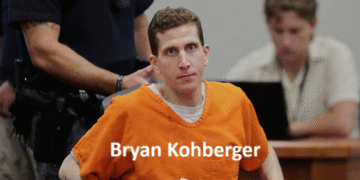In the ever-evolving landscape of cinema and television, certain performers emerge who captivate audiences with their raw talent and versatility. Toby Wallace stands prominently among this new generation of actors, carving a path defined by bold choices and nuanced performances. From his early beginnings in Australian television to international acclaim, Wallace’s trajectory showcases not just remarkable talent, but a deliberate approach to craft that sets him apart in today’s competitive industry.
The Early Years: Foundations of a Rising Star

Born in the United Kingdom and raised in Australia, Toby Wallace’s journey into acting began at a young age. His bicultural upbringing provided him with a unique perspective that would later inform his diverse range of roles. Wallace’s formal introduction to Australian audiences came through the popular television series “Neighbours,” a launching pad that has historically catapulted many actors to international success.
Unlike many young actors who might be content with steady television work, Wallace demonstrated early on a hunger for challenging roles that pushed boundaries. This ambition manifested in his decision to pursue formal training at the prestigious National Institute of Dramatic Art (NIDA) in Sydney, where he honed his technical skills while developing his distinctive approach to character development.
Breakthrough Moments: From “Babyteeth” to Critical Acclaim
Wallace’s career trajectory shifted dramatically with his portrayal of Moses in Shannon Murphy’s “Babyteeth” (2019). His performance as a charismatic yet troubled drug dealer who forms an unlikely bond with a terminally ill teenager showcased his ability to bring depth and humanity to potentially one-dimensional characters. The role earned Wallace the Marcello Mastroianni Award for Best Young Actor at the Venice Film Festival—a prestigious honor that placed him firmly on the international radar.
What made Wallace’s performance in “Babyteeth” particularly noteworthy was his willingness to embrace vulnerability alongside the character’s rougher edges. Critics noted his ability to convey complex emotional states with minimal dialogue, relying instead on physical presence and subtle facial expressions to communicate Moses’s internal conflicts.
This breakthrough role demonstrated Wallace’s commitment to authenticity over conventional leading-man tropes. Rather than leveraging his sudden recognition to pursue mainstream commercial projects, he continued selecting roles that challenged audience expectations and showcased his range.
Crafting a Diverse Portfolio: From Period Dramas to Contemporary Tales

Following “Babyteeth,” Wallace made strategic choices that prevented him from being typecast. His portrayal of Campbell Eliot in the Netflix series “The Society” revealed his ability to navigate ensemble casts while still creating memorable character moments. Though dramatically different from his Venice-winning role, Wallace brought the same level of psychological insight to this character navigating a Lord of the Flies-esque scenario.
His appearance in the biographical drama “Acute Misfortune” further cemented his reputation for fearlessness in role selection. Playing controversial Australian artist Adam Cullen required Wallace to inhabit a complex, often unlikable character while maintaining audience engagement—a delicate balance he achieved with remarkable precision.
What distinguishes Wallace from his contemporaries is his seamless movement between period pieces and contemporary narratives. Whether in historical settings or modern contexts, he brings an immediacy to his performances that makes even distant time periods feel viscerally present. This temporal versatility has made him a sought-after talent for directors working across various genres and settings.
The Wallace Method: Approach to Character and Performance
Industry insiders often note Wallace’s meticulous preparation for roles. Unlike actors who rely primarily on natural charisma, Wallace employs research-intensive methods that allow him to disappear into his characters. This approach involves immersive techniques such as spending time with individuals similar to those he portrays, adopting physical mannerisms specific to each character, and developing detailed backstories even when not explicitly required by the script.
Directors who have worked with Wallace consistently mention his collaborative nature during production. Rather than arriving with inflexible interpretations, he engages actively with other performers and creative team members to develop authentic relational dynamics on screen. This collaborative spirit, combined with technical precision, results in performances that feel both carefully crafted and spontaneously alive.
Perhaps most notably, Wallace demonstrates remarkable physical transformation abilities without relying on prosthetics or extreme weight fluctuations. Through subtle adjustments in posture, speech patterns, and energy, he creates distinct characters that bear little resemblance to one another despite his recognizable physical features.
International Recognition: Breaking Boundaries Beyond Australia

While many Australian actors follow a predictable path to Hollywood, Wallace has charted a more eclectic course toward international recognition. Rather than immediately pursuing American blockbusters, he has worked across multiple national film industries, collaborating with filmmakers from various cultural backgrounds.
This global approach has expanded Wallace’s artistic vocabulary while introducing him to diverse storytelling traditions. His performances reflect this international perspective, often bringing unexpected cultural nuances to characters that might otherwise fall into familiar archetypes.
Major film festivals around the world have taken notice of Wallace’s boundary-pushing work. Beyond his Venice accolade, his performances have received recognition at events from Toronto to Berlin, establishing him as a truly global talent rather than one associated exclusively with American or Australian cinema.
Future Trajectories: What’s Next for Toby Wallace
As Wallace’s career continues to evolve, industry analysts anticipate even more challenging roles that push creative boundaries. Unlike actors who peak early with attention-grabbing performances but fail to maintain momentum, Wallace has demonstrated a strategic approach to career building that suggests longevity.
Upcoming projects suggest a continued commitment to character-driven storytelling rather than high-concept spectacles. This focus on narrative substance over visual style positions Wallace as an actor likely to develop a body of work defined by artistic merit rather than commercial metrics alone.
Perhaps most exciting for cinema enthusiasts is Wallace’s interest in eventually moving into production and possibly direction. His experiences working with visionary filmmakers have provided him with valuable insights into storytelling that extend beyond performance, suggesting potential future contributions to cinema that go beyond his considerable acting talents.

Conclusion: The Making of a Modern Screen Icon
Toby Wallace represents a new model of screen actor—one defined not by conventional star power but by transformative artistic choices. His rise from Australian television to international acclaim illustrates how thoughtful role selection and dedicated craftsmanship can create a sustainable career path in an industry often fixated on overnight success.
What ultimately distinguishes Wallace is his willingness to embrace artistic risk. In an era where algorithm-driven content often encourages performers to repeat successful formulas, Wallace consistently seeks new creative territory. This courage, combined with technical precision and emotional intelligence, explains why he has become one of the most exciting actors of his generation—and why his future work will likely continue to expand our understanding of what contemporary screen performance can achieve.
(FAQs) About Toby Wallace
Q1 What was Toby Wallace’s first major breakthrough role?
While Toby Wallace had appeared in several Australian productions, his major breakthrough came with the film “Babyteeth” (2019), where he played Moses, a character that earned him the prestigious Marcello Mastroianni Award at the Venice Film Festival for Best Young Actor.
Q2 Did Toby Wallace receive formal acting training?
Yes, Wallace studied at the National Institute of Dramatic Art (NIDA) in Sydney, Australia, which is considered one of the most prestigious drama schools in the Southern Hemisphere. This formal training helped shape his technical approach to character development.
Q3 What makes Toby Wallace’s acting style unique?
Wallace is known for his meticulous character preparation, physical transformations without relying on excessive makeup or weight changes, and his ability to bring depth to potentially one-dimensional characters. He’s particularly noted for conveying complex emotions with minimal dialogue.
Q4 Has Toby Wallace worked primarily in Australian productions or internationally?
While Wallace began his career in Australian television and film, he has since expanded to international productions. Rather than following the typical path directly to Hollywood, he has worked across various national film industries, collaborating with filmmakers from diverse cultural backgrounds.
Q5 Is Toby Wallace interested in other aspects of filmmaking beyond acting?
Yes, Wallace has expressed interest in eventually moving into production and possibly direction. His experiences working with various directors have provided him with insights into storytelling that extend beyond performance, suggesting potential future contributions to cinema beyond acting.
For More Information Visit Bratish Magazine

















































































